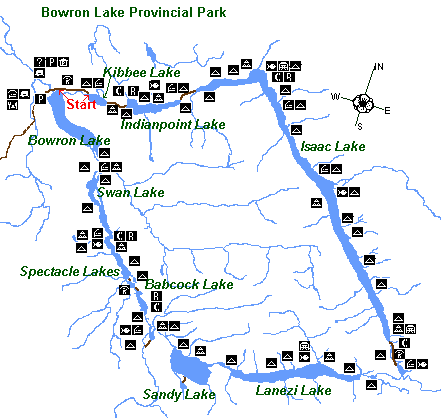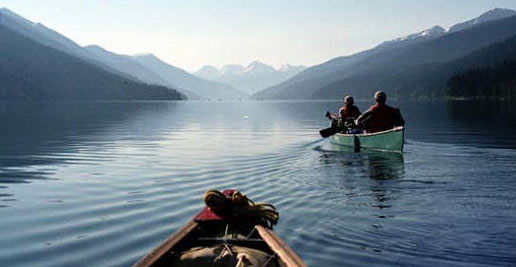I have been researching communications for the trip with the help of my Canadian friend Jen. The trek is particularly an issue for us as mobile phone coverage is non existent and so we will need to carry some sort of GPS locator to stay in contact with our home agent, family and friends.
I like the SPOT unit as it not only allows you to make an emergency call, it also allows people to follow your progress online and send non emergency messages and OK messages.
They cost about £130 to buy plus an annual subscription of £100. I've seen there is a Canadian company that hires for $35 per week so this may be worth doing, I'll also look at hiring locally in the UK (I'm told Windsurfing and Sailing shops offer this service).
Here are the functions of the SPOT:
SOS: Use this function In the event of a life threatening or other critical emergency to notify emergency services of your GPS location and that you need assistance. The GEOS International Emergency Response Center alerts the appropriate agencies worldwide – for example contacting 9-1-1 responders in North America and 1-1-2 responders in Europe.
HOW IT WORKS:
Once activated, SPOT will acquire its exact coordinates from the GPS network, and send that location along with a distress message to the GEOS International Emergency Response Center every five minutes until cancelled or until the batteries are depleted. The Emergency Response Center notifies the appropriate emergency responders based on your GPS location and personal information – which may include local police, highway patrol, the Coast Guard, our country's embassy or consulate, or other emergency search and rescue teams – as well as notifying your emergency contacts about the receipt of a distress signal.
IMPORTANT NOTE:
Even if SPOT cannot acquire its location from the GPS network it will still attempt to send a distress signal – without exact location – to GEOS, which will still notify your contacts of the signal and continue to monitor the network for further messages.
9-1-1 EMERGENCY SERVICES POWERED BY GEOS Search and Rescue
Help: In the event of a non-life threatening emergency, you can use this function to notify your personal contacts that you need assistance. Additional SPOT Assist services can be purchased and programmed to your Help button as well. When activated with SPOT Assist, the Help button will notify professional services either on the land or water. SPOT has partnered with national service providers to offer non-life threatening assistance.
HOW IT WORKS:
Once activated, SPOT acquires your location from the GPS network and routes it along with the HELP message through the SPOT satellite network every five minutes for one hour or until cancelled. Your contacts will receive an SMS text message including coordinates, or an email with a link to Google Maps™ showing your location.
IMPORTANT NOTE:
Even if SPOT cannot acquire its location from the GPS network it will still attempt to send a HELP message – without exact location – to your personal contacts.
Check-in/OK: This feature allows you to let your friends and family know that all is OK with a pre-programmed message along with your GPS location. With a push of a button a message is sent via email or SMS to up to 10 pre-determined contacts and your waypoint is stored in your SPOT account for later reference. Your stored waypoints can be easily integrated into a SPOT Shared Page or SPOT Adventure account.
HOW IT WORKS:
Once you have activated your SPOT Messenger and set up your account, you can change your contacts and customize your message at any time. When you push the Check-in/OK button, you send one pre-programmed message to your contacts. Your contacts will receive an SMS text message including coordinates, or an email with a link to Google Maps™ showing your location.
Custom Message: This feature allows you to let your friends and family know receive a custom message along with your GPS location with a push of a button. Use this feature as a secondary OK message or transfer your personal help alert to this message function if you are using a SPOT Assist service on your Help button.
The Custom Message functions exactly like your Check-in/OK message You can also have access to your waypoints in your SPOT account so you can review your route at a later date. Or link your SPOT account to SPOT Adventures and save a map of your adventures using your SPOT waypoints, and enhance the story with photos and a blog.
HOW IT WORKS:
Once you have activated your SPOT Messenger and set up your account, you can change your contacts and customize your message at any time. When you push the Check-in/OK button, you send one pre-programmed message to your contacts. Your contacts will receive an SMS text message including coordinates, or an email with a link to Google Maps™ showing your location.
Track Progress: Start/stop tracking at any time using your SPOT device (Additional service required). You can also mark a Reference Point or send Check-in/OK messages from specific locations while in Track Progress mode.
Mobile Phones
Mobile phone coverage for Canada has three good carriers (so I am told by my Canadian buddy Jen)
Rogers:
http://www.rogers.com/
Telus:
http://www.telusmobility.com/
Bell:
http://support.bell.ca/
I am told that with a UK phone you can buy a Telus SimCard, which you can purchase pretty much anywhere (grocery store, 7-11, probably even at the airport) then you activate it and it works on a pay as you go basis.
With Rogers you can get a sim online and activate it so you would be all set before you travel.
You can use your iphone with wifi when you are in a urban areas - burger takeaways and coffee shops have wifi to use!
The combination of GPS unit and mobile phone with an international sim card will allow us to stay well connected with our home contacts throughout the trip and offer a cheaper solution than hiring a satellite phone and charger for the month.
Chargers
Powering the units will also need consideration. I'd be interested in feedback on either the festival style or solar charger units and how effective people have found them.
The universal phone chargers use standard batteries and will charge an iphone approx. 1.5-2 times and cost £15. Solar chargers are about £28 and charge a phone in 4-7 hours.









































.JPG)











